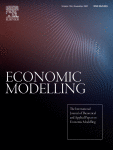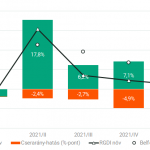
This paper studies the long-run effects of monetary policy on real economic activity. It presents a hybrid menu cost model, the structure of which mimics that of dynamic stochastic general equilibrium models with fixed price adjustment costs (menu costs). It contains two mechanisms capable of generating long-run real effects in response to monetary shocks according to post-Keynesian macroeconomists, and its behavior is studied via agent-based simulations. After being calibrated to reproduce key features of the microdata, the model estimates that a typical monetary shock has substantial long-run real effects, with around one-quarter of the shock being absorbed by real output. However, the long-run effectiveness of a monetary shock turns out to decrease with its size. The key mechanisms generating long-run real effects are shown to be demand–supply interactions, that is, positive feedbacks from aggregate demand to aggregate supply. The results suggest that central banks should stronger emphasize stabilizing real economic activity when designing their monetary policies.
⇒ Tovább a teljes cikkre.
Nem található esemény a közeljövőben.
A KRTK Közgazdaság-tudományi Intézet teljesítményéről A KRTK KTI a RePEc/IDEAS rangsorában, amely a világ közgazdaság-tudományi tanszékeit és intézeteit rangsorolja publikációs teljesítményük alapján, a legjobb ... Read More »

Tisztelt Kollégák! Tudományos kutatóként, intézeti vezetőként egész életünkben a kutatói szabadság és felelősség elve vezetett bennünket. Meggyőződésünk, hogy a tudomány csak akkor érhet el ... Read More »

Srí Lanka: a 2022-es gazdasági válság leckéje – A. Krueger Lessons from Sri Lanka Anne O. Krueger Jul 25, 2022 – Project Syndicate ... Read More »

A permanens válság korában élünk – J. Meadway We’re living in an age of permanent crisis – let’s stop planning for a ‘return ... Read More »

A 2021 végén, illetve 2022 elején tapaszalt 6, illetve 7%-os cserearányromlás brutális reáljövedelem-kivonást jelentett a magyar gazdaságból. A külső egyensúly alakulásával foglalkozó elemzések többnyire ... Read More »
